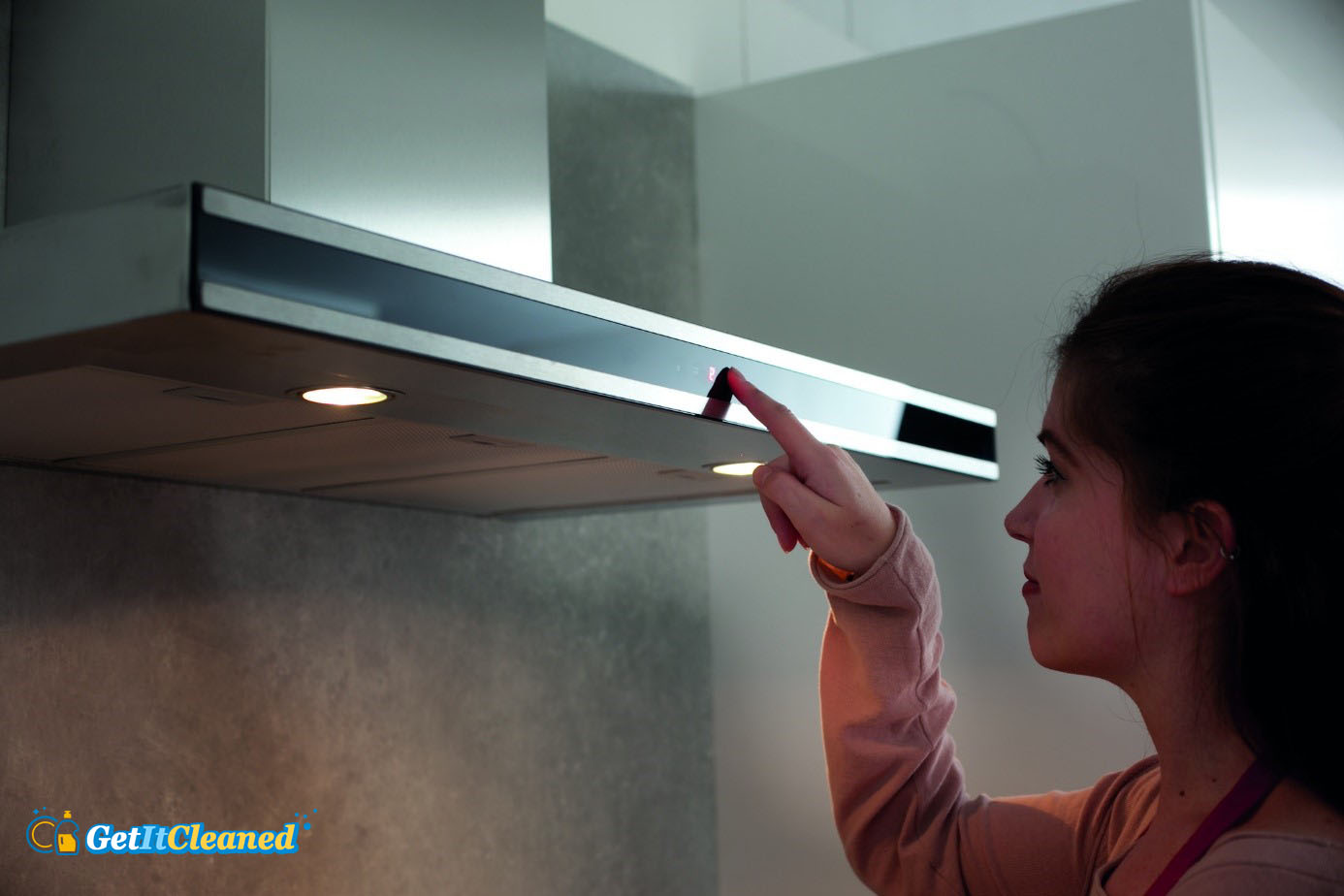In most kitchens, the most neglected appliance when it comes to cleaning is usually the extractor fan. That is maybe because we tend to be more focused on the oven or maybe we assume that if the food we are cooking has no direct contact with the fan we do not really need to clean it. Adopting this way of thinking, however, will greatly reduce the lifespan of this particular domestic appliance of yours and it will also prevent it from working properly. Additionally, a build-up of grease and grime can pose a fire hazard, making it essential to clean extractor mechanisms regularly. It’s not just about maintenance; it’s about safety too. Kitchen extractor fans need to be sanitised on a regular basis.
Understanding how to clean an extractor fan is crucial, as the process involves several steps that ensure the efficiency and longevity of your appliance.
How often do you need to clean your extractor fan?
If you don’t want to spend hours washing and scrubbing your fan, wipe it every time you finish using it. Hopefully, you already stick to that routine with your oven. This routine is just as necessary for cooker hoods, as they collect a surprising amount of debris and grease particles during the cooking process. If you don’t, it will be best if you try and change your ways. Otherwise, sanitising the extractor fan (and your cooker) will be a more challenging and time-consuming task that it has to be. Making sure to clean extractor fan filters after heavy use, especially after cooking greasy foods or during extensive cooking sessions, can prevent long-term damage and efficiency loss.
Tools and supplies you will need
Arm yourself with the right products and tools to make the cleaning process easier and more effective. Depending on the condition of your home appliance and the way in which you have maintained it, you may not need to use all of the following items:
- A toothbrush
- A sponge
- Dish soap
- Water
- Baking soda
- Vinegar
It’s also a good idea to have some bicarbonate of soda on hand, which can be used to tackle stubborn grease spots. For tougher stains, creating a paste from baking soda and a little water can be remarkably effective. Additionally, using a washing up liquid solution can help cut through the grease and grime commonly found in extractor hoods.
Safety first
No matter whether you are planning to give your fan a thorough wash or to just wipe it quickly after you have finished prepping the dinner, you must unplug it and wait for it to cool down. You don’t want to risk burning yourself or getting electrocuted, right? It’s also important to use gloves and eye protection, especially when working with cleaning chemicals or substances like bicarbonate of soda that can irritate your skin and eyes.
Check the hood of your extractor fan
Start the cleaning process from the hood of the extractor fan. See if it is a removable one or not. If it can be removed, carefully take it off and use a solution of warm water and dish soap to wash it thoroughly. If it cannot be removed, use that same cleaning solution but be very careful when you wash it to avoid damaging the other parts of the fan or spilling all the dirt, grime and grease over your oven. When cleaning cooker components, it’s essential to pay attention to the nooks and crannies where grease can accumulate over time. If the appliance has not been cleaned in a long time, you can include some white vinegar to your cleaning solution. To ensure that all nooks and crannies are properly sanitised, you can also use a toothbrush to reach them. After you wash the cover of the extractor fan, rinse it well with water and dry it fully with a towel.
Moreover, for extractor hood surfaces that are particularly greasy, soaking them in a mixture of hot water and washing up liquid can work wonders. Let them soak for around 10 minutes before you start scrubbing. This process helps to soften the grease, making it easier to remove.
Here we should also mention that you need to be extra careful when you are washing the fan blades. Do not use excessive amounts of water to clean them and always dry them completely before you plug in the appliance. Furthermore, it’s wise to use a damp cloth or sponge when cleaning extractor fan blades, as this minimizes the risk of water getting into the motor.
Filters
Not all kitchen extractor fans have filters but if yours does, you may need to wash them or replace them. We say “may” because some types of fan filters such as those made from carbon or paper may not be washable. If they are, remove them and sanitise them using the cleaning solution from dish soap and water.
For metal grease filters, soaking them in soapy water for a period before scrubbing can be highly effective. However, always check the manufacturer’s instructions as some cooker hoods have specific cleaning requirements.
It’s important to note that if your extractor fan filter is washable, it should be cleaned regularly to maintain its effectiveness. Over time, fan filters can become clogged with grease and other particles, significantly impacting the efficiency of your kitchen extractor fan.
 Rely on a comprehensive oven cleaning service
Rely on a comprehensive oven cleaning service
If you choose to leave all the cleaning to someone else and hire a professional to take care of that task, search for a company that can provide you with an all-round oven cleaning service in London that covers the sanitisation of the extractor fan. When selecting a service, make sure they have experience with various types of extractor fans and cooker hoods, as proper cleaning techniques can vary. The professionals should also offer services to clean extractor fan filters, as these are crucial for the appliance’s optimal performance.


 Rely on a comprehensive oven cleaning service
Rely on a comprehensive oven cleaning service